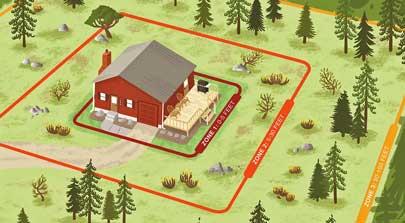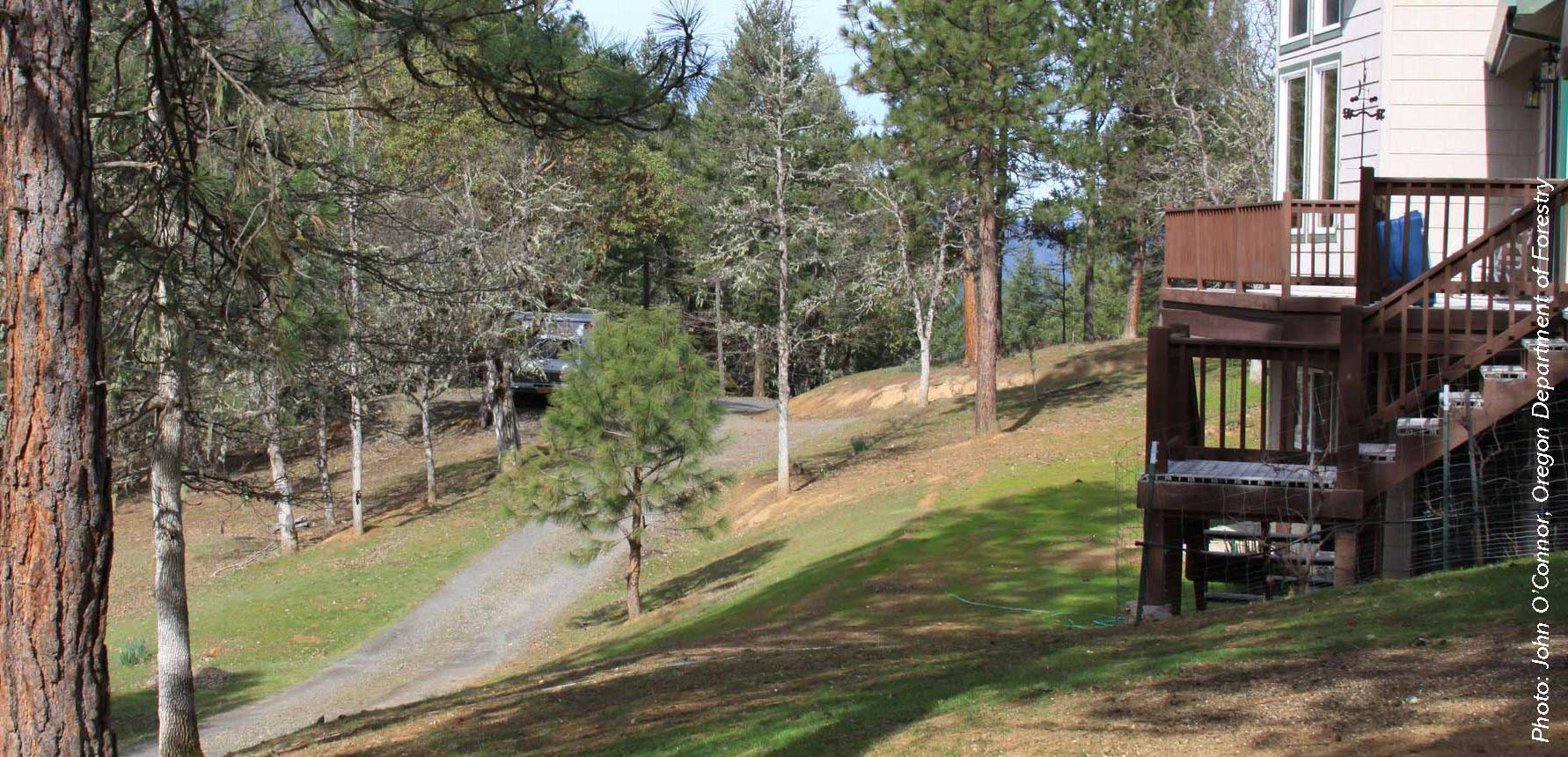Wildfires are a natural part of Oregon’s ecosystems, but their increasing frequency and intensity make preparation more important than ever for homeowners and forestland owners. While wildfires can’t always be prevented, there are effective steps you can take to minimize risks, protect your property and ensure the safety of your family and forestland.
This guide provides a clear roadmap to help you assess potential wildfire hazards, safeguard your home with fire-resistant features, reduce flammable vegetation and create defensible space around your property. By taking proactive measures and utilizing the available resources, you can strengthen your resilience to wildfire and contribute to safer, healthier landscapes in your community.
Step-by-step wildfire preparedness:
Assess the hazard.
Evaluating your property for fire risks, such as overgrown vegetation or stacked firewood near structures, is an important step in wildfire preparation.
Make an evacuation plan.
Developing an evacuation plan is essential for wildfire preparedness. Ensure your plan includes safe routes, communication strategies and meeting points for your family. For a comprehensive guide to creating an effective wildfire action plan, check out the Oregon Wildfire Response and Recovery — Prepare for Wildfire webpage.
Sign up for emergency alerts.
Get lifesaving alerts and instructions (available in multiple languages) during emergencies to help you and others stay safe in Oregon through OR-Alert.
Choose fire-resistant materials for your home.
Protecting your home starts with using fire-resistant materials for roofing, siding and decks, and installing spark arrestors on chimneys.

Maintain defensible space.
Creating defensible space involves removing or managing vegetation around your home to slow the spread of wildfire. Landscaping with fire-resistant plants is another key strategy — consider reviewing Oregon State University Extension’s Fire-Resistant Plants for Home Landscapes for ideas.
For more detailed guidance, refer to The Home Ignition Zone: Protecting Your Property from Wildfire.
Manage your forest with fire in mind.
Effective forest management techniques that will improve the fire resiliency of your forest include thinning dense vegetation to reduce fuel loads and employing prescribed burns. These controlled fires, when carefully planned, help clear excess brush and dead material, reducing fire risk and promoting forest health. Learn more on the slash management and prescribed burning page of this website.
Your forest management plan should address wildfire risks and include strategies for managing with fire in mind, including the use of thinning and prescribed fire. Oregon State University’s Reducing Fire Risk on Your Forest Property publication provides guidelines to help you reduce a fire’s severity.
ADDITIONAL RESOURCES:
Oregon State University Extension Fire Program
This program provides educational resources to home and landowners to help them with fire preparedness and mitigation, prescribed fire, smoke management, and post-fire restoration.
National Fire Protection Association
The National Fire Protection Association has a program called Firewise USA. This program provides resources regarding wildfire preparedness. View a summary of the national program [link to https://www.oregon.gov/osp/Docs/Firewise-the%20program.pdf].
Oregon forest protective associations
Visit the Douglas Forest Protective Association, Coos Forest Protective Association and the
Walker Range fire Patrol for region-specific fire preparedness information and resources.
PUBLICATIONS
Attic and Crawl Space Vents Wildfire Research Fact Sheet
Roofing Materials Wildfire Research Fact Sheet
Decks Wildfire Research Fact Sheet
Coatings Wildfire Research Fact Sheet
Fencing Wildfire Research Fact Sheet
VIDEOS
FIRE – Fire Aware Fire Prepared
How to Make Your Home and Property Fire-Safe
Making Your Forestland Fire-Safe
OTHER
Managing Oregon’s Westside Landscapes with Fire in Mind webpage
In the Woods podcast — Episode 20: Fire Adapted Communities

